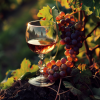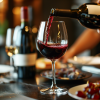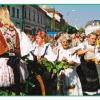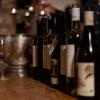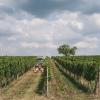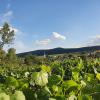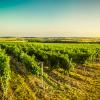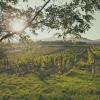11 terms that you won't be ashamed of when tasting
Wine language has its specifics and you may hear some of the expressions used during wine tastings (if you are at your first) for the first time. Therefore, in order to enjoy it, it is not bad to know the content of some terms in advance. You can also use them if you organize a home tasting for your friends, for example. Here are 11 expressions that you won't be embarrassed to use.
Terroir

Terroir is an old French term used to describe a place and is a combination of natural and human factors that manifest in the taste, aroma and character of the products produced in that place, in this case wine. It includes the influence of the soil and subsoil, geomorphology (distinctness of the terrain, slopes, orientation to the cardinal points), climatic conditions, and the influence of human activity in the given place.
Cuvée
The word cuvée is of French origin. In winemaking language, it refers to wine that is made from different varieties of grapes. Each grape variety has its advantages and disadvantages. The aim of the cuvée is to highlight these advantages while balancing the disadvantages.
Barrel wine

The word barrique, in Slovak barik, is a word originating from French and it actually refers to the maturing of wine in contact with burnt wood. It is a 50-year-old technology and its aim is to enrich wine in a sensory way. The result is a mutual exchange of aromatic substances between the wine and the fired interior of the barrel, if special (barrique) barrels are used, or between the wine and wood shavings. This procedure is called pseudo barication and is cheaper than classic barication.
Bouquet
In the language of wine, a bouquet means nothing more than the smell of wine. Smell is a very decisive factor when tasting wine. The nose can perceive and recognize much more than the taste buds. And what we feel, we often also taste or think we taste.
Aftertaste
In the language of wine, a bouquet means nothing more than the smell of wine. Smell is a very decisive factor when tasting wine. The nose can perceive and recognize much more than the taste buds. And what we feel, we often also taste or think we taste.
Zavínenie

This is a technical term for rinsing the glass with a little wine. Among other things, this is done to remove foreign odors. If wine glasses are left for a long time in a cupboard, for example, they can take on its smell. Even when changing from one wine to another - for example, from white to red - the remains of white wine are "wrapped" with a small amount of new red wine. This is done when we don't have any other cups available.
Depot
Wine that matures for a long time in the bottle creates sediment, which in winemaking terminology is called depot, or sediment or sediment. Sediment occurs during the natural aging process and has no negative effect on the wine. However, it usually has a bitter taste, so the sediments are separated by decantation.
Decantation
Decantation is pouring wine into a glass container - a carafe. It is done so that the wine can "breathe", releasing the flavors and aromas in it. Another positive of decanting is the removal of the deposit, i.e. sediment. Depending on the type of wine, it is recommended to decant the red wine in the decanter for at least 60 minutes. Very old, rare wines are not decanted, over-oxygenation is not good for them.
Residentional sugar
Residual sugar is the amount of sugar contained in the grape juice that remains in the wine after alcoholic fermentation. The content of residual sugar in wine is expressed in grams per liter (g/l). Dry wines have a residual sugar content between 0-4 g/l, semi-dry wines between 4.1-12 g/l, semi-sweet wines between 12.1-45 g/l and sweet wines above 45.1 g/l.
Tannins and astringency
Tannins are vegetable tannins that plants in nature use, among other things, to protect against pests. In grapes, tannin is mainly found in the skins of the berries, their seeds and the structure of the stalks. Tannin plays a particularly important role in red wine. It often creates a feeling of bitterness and "tightening" of the mucous membrane in the mouth - astringency.
Old and new world
The world of wine includes "old" and "new" countries. The Old World includes all countries where viticulture has been at home for thousands of years. This includes France, Italy, Germany and Spain. .In the New World, viticulture has a shorter tradition. As a rule, these are countries that were first discovered by ship in the course of history. The New World includes the USA, Chile, New Zealand and South Africa.



